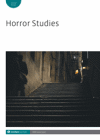
Horror Studies
Scope & Guideline
Diving into Dread: Interdisciplinary Perspectives on Horror
Introduction
Aims and Scopes
- Interdisciplinary Analysis of Horror:
The journal encourages contributions that incorporate perspectives from various fields, including literature, film studies, cultural studies, gender studies, and sociology, to explore horror's complex narratives and themes. - Cultural and Historical Contexts:
Horror Studies emphasizes the importance of situating horror within its cultural and historical contexts, examining how societal issues, historical events, and cultural shifts inform horror narratives and their interpretations. - Critical Approaches to Horror Media:
The journal focuses on critical analyses of horror across different media, including film, literature, television, and digital platforms, investigating how these forms shape and reflect horror's evolution and societal implications. - Thematic Exploration of Identity and Society:
Horror Studies often addresses themes of identity, including gender, sexuality, race, and class, exploring how horror narratives challenge or reinforce societal norms and highlight marginalized voices. - Innovative Methodologies:
The journal is open to innovative methodologies, including psychoanalytic, phenomenological, and postcolonial approaches, that deepen the understanding of horror's psychological, emotional, and social effects.
Trending and Emerging
- Decolonization and Horror:
There is a growing trend towards exploring horror's potential for decolonization, focusing on how horror narratives can challenge colonial legacies and provide new perspectives on identity and representation. - Gender and Sexuality in Horror:
Recent works increasingly examine the intersections of gender and sexuality within horror, particularly how these identities are represented and subverted in contemporary horror narratives. - Digital and Technological Horror:
The influence of digital media and technology on horror is a significant emerging theme, with analyses focusing on how video games, online horror communities, and digital storytelling reshape the experience and interpretation of horror. - Environmental and Ecological Themes:
Emerging studies are addressing the relationship between horror and environmental issues, exploring how horror narratives reflect anxieties about ecological collapse, climate change, and the Anthropocene. - Psychosocial Dimensions of Horror:
There is an increasing focus on the psychological and emotional dimensions of horror, particularly how horror reflects collective societal fears and anxieties in contemporary contexts.
Declining or Waning
- Traditional Gothic Tropes:
There has been a noticeable decline in papers focusing solely on traditional Gothic elements, such as haunted houses and classic monsters, as the field increasingly embraces contemporary interpretations and socio-political themes. - Sole Focus on Horror as Entertainment:
The journal's earlier emphasis on horror purely as a form of entertainment has diminished, giving way to more critical and analytical approaches that interrogate horror's cultural significance and ethical implications. - Static Gender Roles in Horror:
Discussions around static or traditional gender roles within horror narratives are becoming less frequent, as the field moves towards more nuanced examinations of gender fluidity and intersectionality in horror. - Analysis of Horror in Isolation:
There is a decline in the analysis of horror outside of broader cultural contexts; recent publications tend to integrate horror with contemporary issues like politics, environmental concerns, and social movements, rather than treating it as a standalone genre.
Similar Journals
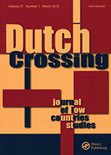
Dutch Crossing-Journal of Low Countries Studies
Exploring the Rich Tapestry of Low Countries CultureDutch Crossing - Journal of Low Countries Studies is a prestigious peer-reviewed journal published by Routledge Journals, Taylor & Francis Ltd, specializing in the interdisciplinary study of the Low Countries, including cultural, historical, and socio-political perspectives. With an established ISSN of 0309-6564 and a digital counterpart E-ISSN 1759-7854, this journal serves as a vital platform for researchers and academics, enhancing the visibility of scholarly work in the fields of Arts and Humanities, Cultural Studies, and Sociology and Political Science. The journal has achieved notable rankings, including Q2 in Cultural Studies and Q3 in Arts and Humanities (Miscellaneous) for 2023, reflecting its impactful contributions and recognition among peers. Furthermore, it operates without Open Access, providing a selective academic discourse that encourages targeted readership while fostering high-quality scholarship. With a converged publishing period from 2011 to 2024, Dutch Crossing continues to be an essential resource for anyone engaged in the study of the cultural and societal dynamics of the Low Countries.

Letteratura e Letterature
Unveiling the Nuances of Literary Phenomena.Letteratura e Letterature is a distinguished scholarly journal dedicated to exploring the nuances of literature and linguistic theory, published by FABRIZIO SERRA EDITORE. This journal, identifiable by its ISSN 1971-906X and E-ISSN 1973-2600, serves as a significant platform for researchers, professionals, and students engaged in critical discourse within the fields of Literature and Linguistics. With a focus on fostering interdisciplinary dialogues, it seeks to illuminate diverse literary phenomena and linguistic intricacies, contributing meaningfully to the academic community. Despite being categorized in the Q4 and Q3 quartiles in 2023, the journal remains a vital resource, encouraging innovative scholarship and broadening the understanding of literary and linguistic interactions. Although it does not currently offer open access, the journal promises rigorous peer-reviewed content, ensuring the quality of published research. Operating from its base in Pisa, Italy, the journal continues to embrace its converged years from 2014 to 2021 and the ongoing 2023 to 2024 period as an era for refined scholarship and vibrant academic exchange.
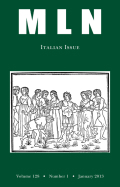
MLN
Illuminating the Rich Tapestry of Language StudiesMLN, published by Johns Hopkins University Press, is a leading academic journal that spans the fields of Linguistics, Literature, and Literary Theory. Serving as a crucial platform for scholarly discourse, MLN has established itself with a substantial impact factor and a dedicated readership, particularly recognized in its category quartiles—ranking Q3 in Linguistics and Language, and Q2 in Literature and Literary Theory as of 2023. The journal provides a vital venue for innovative research and discussions that push the boundaries of language studies and literary analysis, fostering an engaged community among researchers, students, and professionals. Although not open access, MLN maintains its commitment to academic rigor and accessibility in the United States from its base in Baltimore, Maryland, offering valuable insights and significant contributions from converged years spanning 2002 to 2024. With a competitive standing in Scopus rankings, it continues to be an essential resource for those looking to deepen their understanding of the dynamic intersections between language and literature.
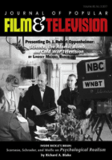
JOURNAL OF POPULAR FILM AND TELEVISION
Unpacking Popular Media's Cultural Significance.JOURNAL OF POPULAR FILM AND TELEVISION, published by Routledge Journals, Taylor & Francis Ltd, stands as a significant platform for academic discourse in the realms of cultural studies, visual arts, and performing arts. With its ISSN: 0195-6051 and an evolving digital presence indicated by its E-ISSN: 1930-6458, the journal has carved out a respected niche since its inception in 1978, continuing to contribute to scholarly discussions through 2024. Its impact within the academic community is underscored by a Q3 ranking in Cultural Studies and a Q2 ranking in Visual Arts and Performing Arts for 2023, highlighting its relevance across diverse fields. Notably, with a Scopus ranking placing it in the 74th percentile among visual arts and performing arts journals, it serves as an essential reference point for researchers, professionals, and students committed to the critical examination of film and television. Although not an open-access journal, it provides valuable insights and analysis that enrich understanding of popular media's impact on society. The journal's location in the United States, with a headquarters in Abingdon, England, further affirms its international scope and influence.
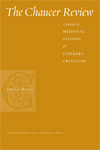
CHAUCER REVIEW
Advancing Scholarship in Chaucer and Literary TheoryCHAUCER REVIEW, an esteemed journal published by Penn State University Press, serves as a leading platform for scholarly discourse in the field of Literature and Literary Theory. Since its inception in 1979 and with coverage extending from 2002 through to 2024, this journal has earned its position in the top tier, achieving a Q1 ranking in the 2023 category of Literature and Literary Theory, placing it within the 87th percentile among peers in the Scopus ranking system. This robust academic publication is dedicated to exploring the intricacies of Geoffrey Chaucer's works while also contributing to the broader understanding of literary studies. Although it is not an open-access journal, it provides valuable insights, critical analyses, and interdisciplinary perspectives that are indispensable for researchers, professionals, and students alike in the continual evolution of literary scholarship. With its rich heritage and commitment to excellence, CHAUCER REVIEW remains a vital resource for those seeking to deepen their understanding of Chaucer’s enduring influence and the literary canon.

FRENCH REVIEW
Exploring the Depths of French Culture and ThoughtFRENCH REVIEW, published by Johns Hopkins University Press, is a premier journal in the fields of Cultural Studies, Education, Linguistics and Language, and Literature and Literary Theory. With its ISSN 0016-111X and E-ISSN 2329-7131, this journal serves as a vital resource for scholars and practitioners seeking to engage with contemporary topics through rigorous academic discourse. The journal has made notable strides in its impact factor, ranking in the third quartile for Cultural Studies and Linguistics, as well as the second quartile for Literature. While it currently does not offer open access, FRENCH REVIEW remains committed to fostering critical analysis and interdisciplinary approaches, effectively contributing to the advancement of research and understanding in its respective fields. With its converged years spanning from 2002 to 2024, this journal is an essential platform for exchanging ideas and enhancing knowledge in the vibrant landscape of French studies and beyond.

Studies in American Humor
Fostering Scholarly Conversations on Humor's InfluenceStudies in American Humor is a distinguished journal published by Penn State University Press, focusing on the rich tapestry of humor within the American cultural landscape. With an ISSN of 2333-9934 and E-ISSN 0095-280X, this journal serves as a pivotal platform for researchers and practitioners in the fields of cultural studies, literature, history, and psychology. The journal is highly regarded, reflected in its Q2 ranking in Literature and Literary Theory and Q3 rankings across various other relevant categories as of 2023. It ranks notably in the 96th percentile for Literature and Literary Theory according to Scopus, underscoring its influence and academic rigor. While it currently operates without open access options, its contributions are invaluable for understanding the nuances of humor as a cultural expression and social commentary. Studies in American Humor aims to foster interdisciplinary dialogue, making it essential reading for scholars, students, and professionals dedicated to the exploration of humor's role in society.
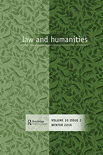
Law and Humanities
Unraveling the Tapestry of Law and Human ThoughtLaw and Humanities, published by Routledge Journals, Taylor & Francis Ltd, serves as a pivotal platform at the intersection of legal studies and humanities, exploring the intricate relationships between law, culture, philosophy, and history. With an ISSN of 1752-1483 and an E-ISSN of 1752-1491, this esteemed journal has established its reputation within the academic community, achieving a Q2 ranking in the Arts and Humanities (miscellaneous) and a Q3 ranking in Law by 2023 metrics. It provides valuable insights and fosters critical dialogue among researchers, practitioners, and students, creating a comprehensive understanding of legal frameworks through a humanities lens. Although not currently open access, the journal's rigorous selection process ensures that published papers contribute significantly to the field, making it an essential resource for anyone interested in the dynamic interplay of law and human experience. Located in the United Kingdom, it continues to shape scholarly discourse from 2007 through its converged years, from 2014 to 2024, as it addresses the evolving challenges and inquiries that define contemporary legal thought.

Eixo e a Roda-Revista de Literatura Brasileira
Unlocking New Perspectives in Brazilian LiteratureEixo e a Roda-Revista de Literatura Brasileira is a pioneering academic journal dedicated to the exploration and dissemination of Brazilian literature, published by the Federal University of Minas Gerais, Faculty of Letters. Since its inception in 1982, this Open Access journal has provided a vital platform for researchers, educators, and enthusiasts to share innovative ideas and critical analyses related to Brazilian literary studies. With its ISSN 0102-4809 and E-ISSN 2358-9787, the journal attracts a diverse readership and invites submissions that contribute to the richness of Brazilian cultural discourse. Located in Belo Horizonte, Brazil, the journal plays a critical role in advancing scholarly dialogue and promoting accessibility in literature research, fostering an inclusive environment for academic exchange.
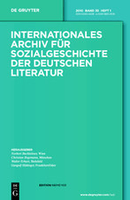
INTERNATIONALES ARCHIV FUR SOZIALGESCHICHTE DER DEUTSCHEN LITERATUR
Unveiling the Social Tapestry of German Literary HistoryINTERNATIONALES ARCHIV FÜR SOZIALGESCHICHTE DER DEUTSCHEN LITERATUR is a distinguished academic journal published by Walter de Gruyter GmbH in Germany, dedicated to the exploration of the social history of German literature. With an ISSN of 0340-4528 and an E-ISSN of 1865-9128, the journal has been a valuable resource since its inception in 1976. The journal aims to provide a platform for scholarly discourse, offering insights into the historical contexts that shape literary production and theory. Despite its current quartile rankings of Q4 in both History and Literature and Literary Theory, the journal remains committed to fostering rigorous academic discussion and attracting contributions that stimulate critical engagement within the field. While not currently available as an Open Access publication, it serves as an essential repository of research for historians, literary scholars, and students interested in the nuanced intersection of social history and literature. Located at Genthiner Strasse 13, D-10785 Berlin, Germany, this journal is an indispensable source for anyone seeking to broaden their understanding of German literary scholarship.